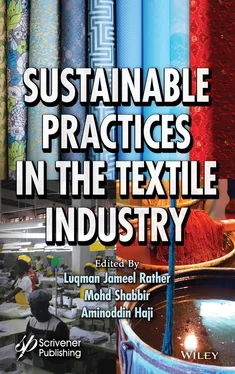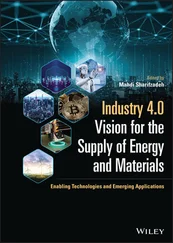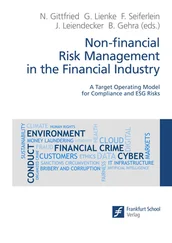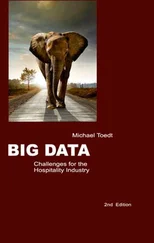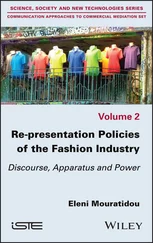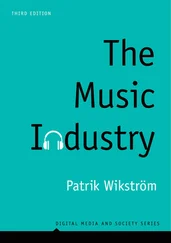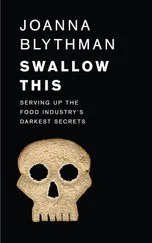Sustainable Practices in the Textile Industry
Здесь есть возможность читать онлайн «Sustainable Practices in the Textile Industry» — ознакомительный отрывок электронной книги совершенно бесплатно, а после прочтения отрывка купить полную версию. В некоторых случаях можно слушать аудио, скачать через торрент в формате fb2 и присутствует краткое содержание. Жанр: unrecognised, на английском языке. Описание произведения, (предисловие) а так же отзывы посетителей доступны на портале библиотеки ЛибКат.
- Название:Sustainable Practices in the Textile Industry
- Автор:
- Жанр:
- Год:неизвестен
- ISBN:нет данных
- Рейтинг книги:5 / 5. Голосов: 1
-
Избранное:Добавить в избранное
- Отзывы:
-
Ваша оценка:
- 100
- 1
- 2
- 3
- 4
- 5
Sustainable Practices in the Textile Industry: краткое содержание, описание и аннотация
Предлагаем к чтению аннотацию, описание, краткое содержание или предисловие (зависит от того, что написал сам автор книги «Sustainable Practices in the Textile Industry»). Если вы не нашли необходимую информацию о книге — напишите в комментариях, мы постараемся отыскать её.
Sustainable Practices in the Textile Industry
Sustainable Practices in the Textile Industry — читать онлайн ознакомительный отрывок
Ниже представлен текст книги, разбитый по страницам. Система сохранения места последней прочитанной страницы, позволяет с удобством читать онлайн бесплатно книгу «Sustainable Practices in the Textile Industry», без необходимости каждый раз заново искать на чём Вы остановились. Поставьте закладку, и сможете в любой момент перейти на страницу, на которой закончили чтение.
Интервал:
Закладка:
The use of natural dyes will make us feel proud to be closely connected with nature and to recognize the importance it plays in our lives. Gradually with the help of organized plantation and farming the cost effective production and dyeing will definitely be possible in future to serve the purpose of large scale trade and commerce. Hence, the application, usage and popularization of natural dyes may be a way to conserve our environment and pay off the obligation of nature.
Acknowledgement
The authors are grateful to University Grants Commission (UGC), Delhi for the Maulana Azad National Fellowship (Taiyaba Nimra Ansari) and Dr. S.T. Silawat, Principal, Govt. Holkar Science College, Indore for providing necessary facilities.
References
1. Kapilraj, N., Keerthanan, S., Sithambaresan, S., Natural plant extracts as acid-base indicator and determination of their pka value, J. Chem ., 2019, 6, 2019. https://doi.org/10.1155/2019/2031342.
2. Chukwu, O., Odu, C., Chukwu, D., Hafiz, N., Chidozie, V., Onyimba, L., Application of extracts of henna ( Lawsonia inarmis ) leaves as a counter stain. Afr. J. Microbiol. Res ., 5, 3351, 2011.
3. Tiford, M., The long history of hematoxylin. J. Biotechnic Histochem ., 80, 73, 2005.
4. Gharravi, A.M., Golarlipour, M.J., Ghorbani, R., Khazaei, M., Natural dye for staining astrocytes and neurons. J. Neuro. Sci. (Turkisk) , 23, 215, 2006.
5. Avwioro, O.G., Onwuka, S.K., Moody, J.O., Agbedahunsi, J.M., Oduola, T., Ekpo, O.E., Oladele, A.A., Curcuma longa extract as a histological dye for collagen fibres and red blood cells. J. Anat ., 210, 600, 2007.
6. Suabjakyong, P., Romratanapun, S., Thitipramote, N., Extraction of natural histological dye from black plum fruit ( Syzygium cumini ). J. Microsc. Soc. Thailand , 4, 13, 2011.
7. Muhammed, A.O., Olutunde, O.A., Benard, S.A., Muhammad Ahmad, A.T., Omoowo, B.T., Hibiscus-Shorgum: A New Morphological Stain in Neuro-Histology. Int. J. Health Res. Innovation , 4, 31, 2016.
8. Richhariya, G., Kumar, A., Tekasakul, P., Gupta, B., Natural dyes for dye sensitized solar cell: A review, Renew. Sustain. Energy Rev ., 69,705, 2017.
9. Desalegn, J.G., Sisay, T.A., Teketel, Y.A., Dye sensitized solar cells using natural pigments from five plants and quasi-solid state electrolyte. J. Braz. Chem. Soc ., 26, 1, 2015. http://dx.doi.org/10.5935/0103-5053.20140218.
10. Sivakumar, V., Vijaeeswarri, J., Anna, J.L., Effective natural dye extraction from different plant materials using ultrasound. Ind. Crops Prod ., 33, 116, 2011.
11. Goktas, O., Duru, M.E., Yeniocak, M., Ozen, E., Determination of the color stability of an environmentally friendly wood stain derived from laurel ( Laurus nobilis L.) leaf extracts under UV exposure. Forest Prod. J ., 58, 77, 2008.
12. Savvidou, M.I. and Economides, D.G., Colour gamut produced by applying mixtures of natural dyes on de-inked mechanical pulp. Color Technol ., 123, 2, 119–23, 2007.
13. Van Dam, J.E., Den, van, Oever, M.J., Keijsers, E.R., van der Putten, J.C., Anayron, C., Josol, F., Peralta, A., Process for production of high density/high performance binder less boards from whole coconut husk: Part 2: Coconut husk morphology, composition and properties. Ind. Crops Prod ., 24, 96, 2006.
14. Mansour, R., Natural dyes and pigments: Extraction and applications. In: Handbook of Renewable Material for Coloration and Finishing , M. Yusuf (Ed.), pp. 75-102, Scrivener Publishing, Massachusetts, 2018.
15. Samantha, K. and Agarwal, P., Review article on application of natural dyes on textiles. Indian J. Fibre Text. Res ., 34, 384, 2009.
16. Kumar, R. and Tripathi, Y. C., Natural dye from forest biomass. Training manual on extraction technology of natural dyes & aroma therapy and cultivation value addition of medicinal plants, 1, 51, 2011.
17. Petrakis, E.A., Cagliani, L.R., Tarantilis, P.A., Polissiou, M.G., Consonni, R., Sudan dyes in adulterated saffron ( Crocus sativus L.): Identification and quantification by 1H NMR. Food Chem ., 217, 418, 2017.
18. Piatkowska, M., Jedziniak, P., Olejnik, M., Żmudzki, J., Posyniak, A., Absence of evidence or evidence of absence? A transfer and depletion study of Sudan I in eggs. Food Chem ., 239, 598, 2018.
19. Christie, R.M., Environmental aspects of textile dyeing . Woodhead Publishing, Cambridge, 2007.
20. National Toxicology Program. Carcinogenesis bioassay of CI solvent yellow 14 (CAS No. 842-07-9) in F344/N rats and B6C3F1 mice (feed study). National Toxicology Program Technical Report Series , 226, 1, 1982.
21. Duman, O., Tunc, S., Polat, T.G., Adsorptive removal of triarylmethane-dye (Basic Red 9) from aqueous solution by sepiolite as effective and low-cost adsorbent. Microporous Mesoporous Mater ., 210, 176, 2015.
22. Lacasse, K. and Baumann, W., Textile chemicals: Environmental data and facts , Springer, Dortmund, 2012.
23. Foguel, M.V., Ton, X.A., Zanoni, M.V., Maria Del Pilar, T.S., Haupt, K., Bui, B.T.S., A molecularly imprinted polymer-based evanescent wave fiber optic sensor for the detection of basic red 9 dye. Sens. Actuators B , 218, 222, 2015.
24. Sivarajasekar, N. and Baskar, R., Adsorption of basic red 9 on activated waste Gossypium hirsutum seeds: Process modeling, analysis and optimization using statistical design. J. Ind. Eng. Chem ., 20, 2699, 2014.
25. Pohanish, R.P., Sittig’s Handbook of Toxic Hazardous chemicals and carcinogens , William Andrew, Amsterdam: Elsevier, Cambridge, 2017.
26. National Toxicology Program. NTP Toxicology and Carcinogenesis Studies of CI Basic Red 9 Monohydrochloride (Pararosaniline)(CAS No. 569-61-9) In F344/N Rats and B6C3F1 Mice (Feed Studies). National Toxicology Program Technical Report Series , 285, 1, 1986.
27. Ali, H.M., Shehata, S.F., Ramadan, K.M.A., Microbial decolorization and degradation of crystal violet dye by Aspergillus niger. Int. J. Environ. Sci. Technol ., 13, 2917, 2016.
28. Mani, S., Bharagava, R.N., Exposure to crystal violet, its toxic, genotoxic and carcinogenic effects on environment and its degradation and detoxification for environmental safety. Reviews of environmental contamination and toxicology, P. de Voogt (Ed.), Vol. 237, pp. 71–104, Springer, Cham, 2016. https://doi.org/10.1007/978-3-319-23573-8_4.
29. Azmi, W., Sani, R.K., Banerjee, U.C., Biodegradation of triphenylmethane dyes. Enzyme Microb. Technol ., 22, 185, 1998.
30. Newman, M.C., Fundamentals of ecotoxicology: The science of pollution , CRC Press, Boca Raton, 2015.
31. Bharagava, R.N., Mani, S., Mulla, S.I., Saratale, G.D., Degradation and decolourization potential of an ligninolytic enzyme producing Aeromonas hydrophila for crystal violet dye and its phytotoxicity evaluation. Ecotoxicol. Environ. Saf ., 156, 166, 2018.
32. Littlefield, N.A., Blackwell, B.N., Hewitt, C.C., Gaylor, D.W., Chronic toxicity and carcinogenicity studies of gentian violet in mice. Toxicol. Sci ., 5, 902, 1985.
33. Chakraborty, J. N., Fundamentals and practices in colouration of textiles, pp. 241–244, Woodhead Publishing India Pvt. Ltd., New Delhi, 2014.
34. Sharma, D., Gupta, C., Aggarwal, S., Nagpal, N., Pigment extraction from fungus for textile dyeing. Indian. J. Fibre Text ., 37, 73, 2012.
35. Kasiri, M.B. and Safapour, S., Natural dyes and Antimicrobials for textiles, in: Green Materials for Energy, Products and Depollution , E. Lichtfouse, J. Schwarzbauer, D. Robert (Eds.), p. 229–286, Springer, New York, 2013.
Читать дальшеИнтервал:
Закладка:
Похожие книги на «Sustainable Practices in the Textile Industry»
Представляем Вашему вниманию похожие книги на «Sustainable Practices in the Textile Industry» списком для выбора. Мы отобрали схожую по названию и смыслу литературу в надежде предоставить читателям больше вариантов отыскать новые, интересные, ещё непрочитанные произведения.
Обсуждение, отзывы о книге «Sustainable Practices in the Textile Industry» и просто собственные мнения читателей. Оставьте ваши комментарии, напишите, что Вы думаете о произведении, его смысле или главных героях. Укажите что конкретно понравилось, а что нет, и почему Вы так считаете.
